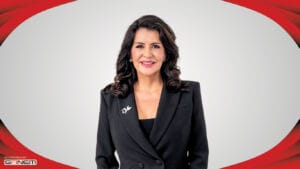It’s the start of a New Year and everyone from startups to big established companies set a sales goal, or some number they would like to reach come December. How can you better your chances of reaching your sales targets this year?
Kendrick Shope is an international sales expert, the CEO and creator of the Authentic Selling process and was named the top sales expert to follow by Twitter in 2015 and 2016. She even sat down with Steve Harvey recently and gave him a few pointers on how to be a better salesperson.
Kendrick says if you want to sell more in 2019, focus on these 10 strategies:
• Don’t push too hard: Your intuition may be telling you that you have to push hard to close a deal, but that’s actually not the way to do it. In fact, when you first get on the call or meet someone, I encourage you to say, “This is not going to be a hard sales pitch. I’m simply here to help you make an informed decision that best serves you or your business.” Nobody likes to feel pressured. Don’t be that salesperson!
• A solution to the pain: The best way to sell anything is to find your prospect’s pain and provide the solutions to relieve that pain. Ask a question like, “What prompted you to reach out today?” You want to get them talking about the problem they are having, the pain they are dealing with or the change they are looking to make. Touching on these emotions is how you get them engaged.
• Be real and show empathy and understanding: When a customer reveals their struggles to you, don’t jump in for the close right away. Be a human being and show some empathy. Say, “Thank you for sharing that with me. I know how hard it is to talk about.” Only then can you go into the close and show them how your product or service can help.
• Have a 4-step process: Now that you fully know your buyer’s pain points, problems and frustrations, it’s time to close the deal. This is where you focus on the solutions, perks and benefits of working with you. Outline a 4-step process of your plan that will solve their problems. “First, we are going to do this. Next, we are going to do that. The last step will be…and all of this means….” A sequential order of steps has been shown to lead to more sales.
• Mention their names: The best salespeople refer to their buyers by name throughout the presentation. This helps to personalize the presentation. It leaves the prospect feeling important and as if this presentation is specifically for him or her. For example, “Well Sue, what I have found in all my years in the business.”
• Tell a story: The best salespeople use stories in their presentations. The idea is you want to help the buyer get a specific vision. The story is usually based on a similar set of circumstances that your prospect is in. It focuses on the initial problem, how you introduced the solution and the results it brought.
• Make sure and address their questions and concerns: This step is crucial. After you’ve gone through the benefits of your product or service, most buyers are waiting for the hard close. Don’t go there just yet because more than likely, this prospect has some questions. Ask them, “Are there any questions you have or is there anything else I can explain in more detail?”
• It’s not about price. It’s an investment: When you talk about money, always refer to it as an investment. It’s not an expense, price, or going to cost them anything. When you say investment, it says this is going to help them grow or get better. Be confident in your delivery. Say, “The investment is $3,000 for three months of service.” Don’t beat around the bush and say, “Well, generally speaking, we usually like to charge our clients, um, about $3,000.”
• It’s all about the follow up: Chances are you might not close the deal after the first presentation and that’s okay. Most deals close in the follow-up. You’d be shocked at how many people never follow up with their prospects. Always follow up whether it’s through email, a phone call or an in-person meeting.
• Constant evaluation: Anyone can say they have the best product or service, but that also comes across as less credible. When you’re selling an on-going service, make it a point that you regularly evaluate the results your clients get. Let them know that you will work with them to make improvements as needed.




